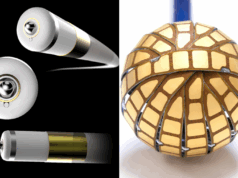Patients with atrial fibrillation who cannot take blood thinners now have an alternative to reduce their risk of stroke, which is five times more common in people with the rhythm disorder. The non-surgical procedure works by tying off the left atrial appendage (LAA), the source of most blood clots leading to stroke in patients with atrial fibrillation. Northwestern Medicine heart rhythm specialists from the Bluhm Cardiovascular Institute were the first to perform this procedure in Illinois, USA.
“Traditionally, surgery was required to close off the LAA. Now we have the ability to safely and permanently close it using a minimally invasive, non-surgical approach,” said Brad Knight, medical director of the Center for Heart Rhythm Disorders at the Bluhm Cardiovascular Institute, Chicago, USA. “This is an innovative method that has the potential to revolutionise the field of stroke prevention in patients with cardiac rhythm disorders.”
The procedure, known as LAA occlusion, is performed using the FDA-approved Lariat Suture Delivery Device (SentreHeart). Physicians access the LAA by inserting a catheter under the rib cage into the sac around the heart through which the suture to tie off the LAA is delivered. Another catheter is advanced through a blood vessel in the groin up into the heart, and positioned inside the LAA to help guide the suture over the LAA. The outpatient procedure eliminates the number one source of heart related stroke, while avoiding the potentially serious side effects associated with blood thinners.
“We are happy to be able to give our patients another option. Non-surgical procedures mean less discomfort and a shorter recovery time,” said Albert Lin, associate medical director of Cardiac Electrophysiology at the Bluhm Cardiovascular Institute. “Drug therapies have historically been the first line of defense for patients with atrial fibrillation, but they are not tolerated by all patients and can pose serious side effects for some. Now, we have the ability to safely and permanently close the LAA without the need for major surgery and potentially protect against the risk of stroke.”
“There has recently been a renaissance in the treatment of atrial fibrillation. This latest technological advance represents yet another novel approach to treat atrial fibrillation,” said Clyde Yancy, chief of the Division of Cardiology and associate director of the Bluhm Cardiovascular Institute.









